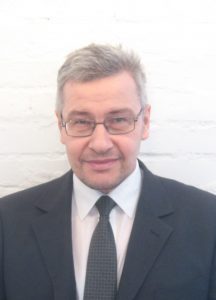Medieval Archaeology Department
The Department of Medieval Archaeology (hereinafter referred to as DMA) was established at the end of 2012 as a subdivision of the National Center for Archaeological Studies of the Sh. Marjani Institute of History of the Tatarstan Academy of Sciences. When the Institute of Archaeology named after A.Kh. Khalikov of the Academy of Sciences of the Republic of Tatarstan was established in 2014, the DMA headed by the corresponding member of the Tatarstan Academy of Sciences F.Sh. Khuzin included 22 staff members (10 state employees and 12 contract specialists).
Since the end of 2015, the DMA was headed by Candidate of Historical Sciences Z.G. Shakirov. Since January 2019, the appointed Head of the DMA was Doctor of Historical Sciences I.L. Izmailov. During this period, the department consisted of 16 employees, including 5 Doctors and 7 Candidates of Sciences. Since May 2021, the appointed Acting Head of the DMA was Candidate of Historical Sciences D.K. Tulush. Today, the main structure of the department includes the following regular staff members: Doctor of Historical Sciences F.Sh. Khuzin (Chief Research Associate), Doctor of Historical Sciences A.M. Gubaidullin (Chief Research Associate), Doctor of Historical Sciences I.L. Izmailov (Senior Research Associate), Doctor of Historical Sciences E.P. Kazakov (Senior Research Associate), Doctor of Historical Sciences V.V. Napolskikh (Senior Research Associate), Candidate of Historical Sciences N.G. Nabiullin (Senior Research Associate), Candidate of Historical Sciences R.R. Valiev (Senior Research Associate), Candidate of Physical and Mathematical Sciences R.Kh. Khramchenkova (Senior Research Associate), Candidate of Historical Sciences D.G. Mukhametshin (Senior Research Associate), E.V. Volkova (Research Associate), R.S. Zorya (Junior Research Associate), A.A. Kuklina (Junior Research Associate), and non-regular staff members – A.I. Bugarchev (Laboratory Research Assistant) and A.N. Sattarova (Laboratory Research Assistant).
The scientific activity of the DMA is carried out within the framework of the Priority Research Areas of the Institute for the period of 2019-2021, primarily the following areas – “Study of the Peoples of the Volga-Urals in the System of Medieval Civilizations of Eurasia. The Great Silk Road”.
The following problems are addressed within the framework of this study area – “Bolgars in Eastern Europe of the 8th-10th cc.”, “Archaeological Monuments of Volga Bolgaria in the 10th – Early 13th cc.”, “Archaeology of the Ulus of Jochi (The Golden Horde)”, “Archaeological Monuments of the Middle Volga Region of the 15th-18th cc.”. Research and development activities related to these topics includes the solution of such problems as the culture formation study of the steppe and forest-steppe Eurasia, in particular, the early Bolgar culture and its environment; the history of the emergence and evolution of the urban Turkic civilization and, particularly, the Bolgar and Golden Horde towns in the Volga region (Bilyar, Bolgar, Saqsin, Juketau, Kazan, Elabuga, Sarai, Sarai al-Jadid, Xacitarxan, and others); identification of the ethnopolitical structure of Turkic-Tatar states, development of the history and archaeology of Kazan and Kazan Khanate, and the Russian culture of the 16th – 18th centuries on the example of Sviyazhsk, Kazan, Elabuga and Chistopol.
The department’s researcher associates participate in organizing the activities of regional creative groups aimed at creating four volumes of the multivolume academic publication “Archaeology of the Volga-Urals”, namely:
Volume IV. The Volga-Urals in the First Half – Middle of the 1st Millennium AD.
Volume V. The Volga-Urals in the 8th – Early 13th cc. Volga Bolgaria. The Finno-Ugric World. Turkic-Speaking Nomads.
Volume VI. The Volga-Urals in the Ulus of Jochi Period (Second Third of 13th – early 15th cc.).
Volume VII. The Volga-Urals in the Second Quarter of 15th – 17th cc.
The DMA staff conduct active field studies in the territory of Tatarstan, including those within the framework of the Bolgar, Bilyar, Nizhnevolzhsk, Kazan and Sviyazhsk archaeological expeditions. Field studies are also carried out in the territory of other constituent entities of the Russian Federation – in the Volga region, the Caucasus, Altai and Crimea.
In recent years, the DMA staff in collaboration with colleagues from other Russian research centers, including a number of foreign countries, have actively studied Bolgar, Sviyazhsk, Juketau and Selitrennoe settlements, medieval monuments in the territory of Astrakhan, and participated in the excavations of Kurmysh on the Oka, Samosdelka settlement on the Lower Volga, the Turkic monuments of Altai, the medieval towns of Bolgaria, and Bai-Balyk (Biybulag) settlement in Mongolia.
Intermediate results and archaeological study results are reported and discussed at regular international congresses on medieval archaeology of the Eurasian steppes, International Bolgar forums and scientific conferences at various levels.
The specifics of a multinational region, such as the Middle Volga and Lower Kama regions, inhabited by Finno-Ugric population since ancient times, even before the appearance of Turkic-speaking tribes, requires the study of the issues of ethnogenesis and ethnic history of contemporary peoples, the specific features of the formation of cultures of various ethnic groups in the conditions of continuous interaction and mutual influence. This traditional research area of Kazan archaeologists is successfully continued today by the DMA scientists. The scientists of the department are working on a number of fundamental research problems in this area, covering all periods of the Middle Ages of Eurasia, and the Early Modern times period in the Middle Volga and Kama regions.









